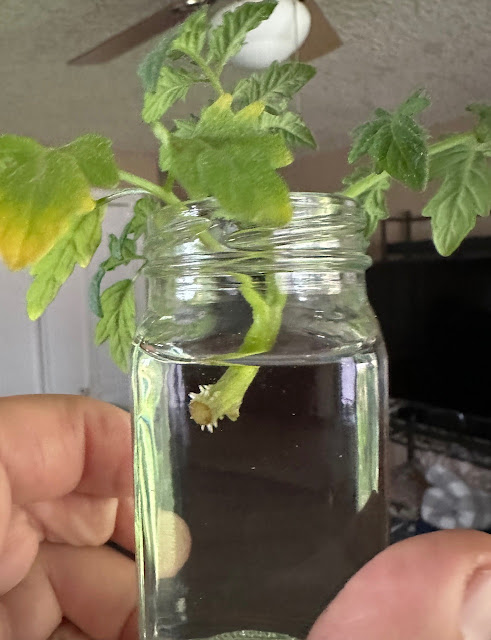Bearded iris always give me a particular kind of joy. But only when they thrive. That's a conundrum for me. Why do these, usually tough, carefree, plants seemingly never do well in my garden?
The "rules" for growing bearded iris are well known and often repeated - keep the soil clean, no weeds, let the rhizomes bask in the sun. So this is what I get, year after year.
And this.
These are just the latest attempts. Usually it's the same, but in the ground instead of containers. My hope this time was that, in clean potting soil, the leaf diseases would not take over.
Meanwhile, irises I gave up on, in the duck yard - no weeding, and they god a layer of wood chip mulch - look like this.
Beautiful and thriving, and much less leaf disease.
In the narrow garden border, I tried (more or less successfully) to keep some colonies weeded, and mulched with arborist chips. They look like this.
Not perfect, but way better than the ones I grew "by the rules". Others, more crowded by other plants, also bloomed and look better.
I don't intend to leave the weeds in there, but it's interesting that these irises are doing as well as they are. Also, more extreme and mostly not blooming, here are the irises I've yet to rescue from the decommissioned bed - more crowded and definitely at risk of weed takeover, but the leaves don't look bad.
So here's my theory. I think the bare soil contains fungus disease spores or bacterial disease spores. When it rains, those splash onto the leaves, where they thrive, infect, and spread. The disease only happens here with the heavy rains and chill, after initial Spring foliage has grown. Grasses and clean mulch don't allow the diseases to splash onto leaves. (I've seen lots of bark mulched irises doing fine in town, too). These issues might not be the case elsewhere, who am I to say? But here, neglected irises in grasses and weeds, or with clean mulches, seem to do better.
So now my plan is this. I'll try to rescue the remaining rhizomes and plant them on a slope, around a recently removed fir tree stump.
They'll get a good layer of clean arborist chip mulch. I'll keep them weed free, but I won't do much else.
We'll see what happens.



















